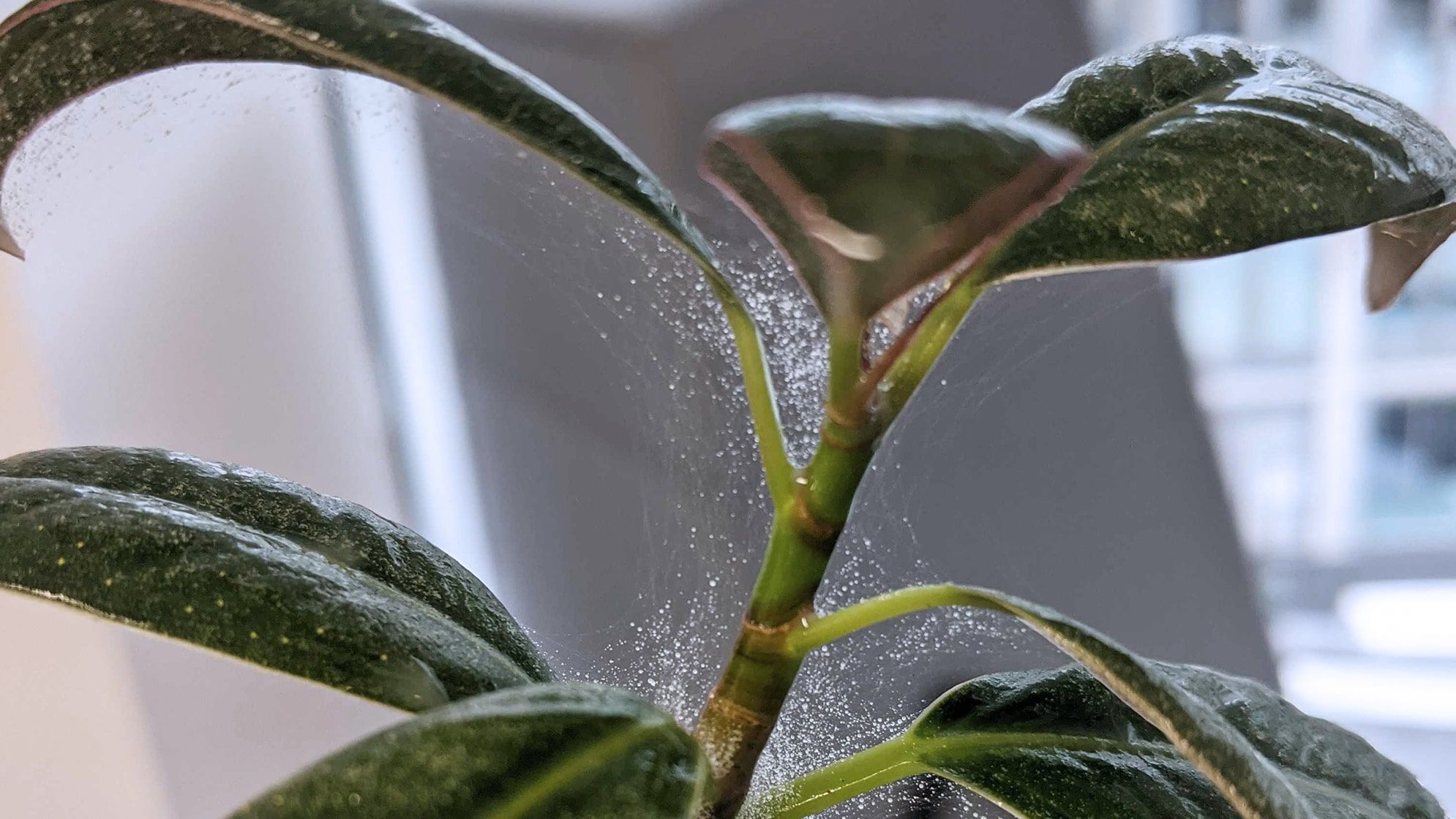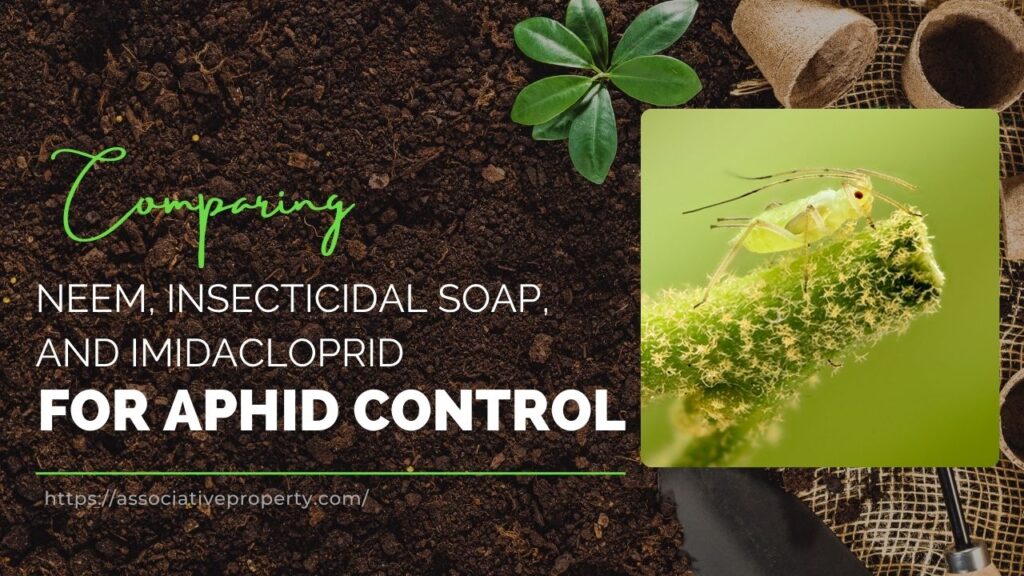Spider mites might be tiny, but they can cause massive damage to your plants. If you’ve spotted fine webbing on your houseplants, garden vegetables, or fruit trees, you might be dealing with one of the most frustrating garden pests out there.
In this post, I’ll break down everything you need to know about spider mites: how to identify them, treat infestations, and prevent them from coming back.

What Are Spider Mites?
Spider mites are tiny arachnids, about 1/50 of an inch in size, which makes them incredibly hard to spot. The most common type found in gardens is the two-spotted spider mite, oval-shaped with pale green coloring and two dark spots on their sides.
They thrive in hot, dry environments and can reproduce incredibly fast — completing their life cycle in under two weeks. That means if you don’t act quickly, they can take over your plant in no time.

How to Spot Spider Mites
Some early signs of spider mite infestations include:
- Fine webbing on stems and leaves
- Stippling or speckled patterns on leaves
- Bronzing or shiny discoloration
- Leaves turning brown or drying out
You might need a jeweler’s loupe or magnifying glass to actually see them. They usually hang out on the undersides of leaves or in hard-to-reach nooks.
Plants Most at Risk
Spider mites affect a wide range of plants, including:
- Beans
- Cucumbers
- Melons
- Raspberries
- Roses
- Houseplants
- Fruit trees
Fine-leaved plants (like some palms) are especially vulnerable indoors.
How to Get Rid of Spider Mites
1. Homemade Remedies for Light Infestations
- Mix soapy water with rubbing alcohol in a spray bottle.
- Spray down the leaves and stems thoroughly.
- Use a cloth or cotton swab to wipe down all surfaces.
- Repeat applications are necessary to target all mite generations.
2. Stronger Treatments for Severe Infestations
- Use insecticidal soap, neem oil, or horticultural oil.
- Oils are especially effective because they smother the eggs, reducing future populations.
- Be cautious when using these around flowers — they can harm pollinators.
- Apply treatments in the evening when insect activity is low.
Natural Predators and Biological Control
If you’d rather not use chemicals, you can support beneficial insects like green lacewings, whose larvae feed on spider mites.
To attract them, grow plants from the Apiaceae (carrot) and Asteraceae (daisy) families, such as:
- Fennel
- Cilantro
- Dill
- Queen Anne’s Lace
- Cosmos
- Echinacea
- Yarrow
Spider Mite Prevention Tips
- Inspect new plants before bringing them home, and isolate them for 14 days.
- Choose plants with larger leaves — they’re easier to inspect and clean.
- Avoid hot, dry conditions. Use a humidifier indoors or mist your plants regularly.
- Keep your garden and indoor space clean and well-ventilated.
Final Thoughts
Spider mites can be a headache, but with a little vigilance and some preventative care, you can keep them under control. Whether you’re dealing with houseplants or garden crops, catching them early and acting quickly is the key.
Have a pest that’s giving you trouble this year? Drop a comment — I’d love to hear what’s bugging your garden!
FAQs About Spider Mites
Q1: What environmental conditions favor spider mite infestations?
Spider mites thrive in hot, dry environments with low humidity. They’re particularly problematic during warm seasons when temperatures exceed 80°F (27°C). Dusty conditions and drought-stressed plants are especially susceptible to infestations.
Q2: Can spider mites infest indoor plants?
Yes, spider mites can infest indoor plants, especially in environments with low humidity. They often enter homes on newly acquired plants or through open windows. Maintaining adequate humidity and regularly inspecting plants can help prevent indoor infestations.
Q3: Are spider mites harmful to humans or pets?
Spider mites are not harmful to humans or pets. They do not bite or transmit diseases. However, their feeding can cause significant damage to plants, leading to leaf discoloration and drop.
Q4: How can I detect spider mites early?
Early signs include stippling (tiny yellow or white spots) on leaves, fine webbing, and a dusty appearance on foliage. A simple test involves tapping a leaf over a white sheet of paper; if tiny specks fall and move, it’s likely spider mites.
Q5: Can spider mites develop resistance to treatments?
Yes, spider mites can develop resistance to chemical treatments, especially if the same pesticide is used repeatedly. Rotating different types of miticides and incorporating non-chemical methods can help prevent resistance.
Q6: What are some natural predators of spider mites?
Natural predators include predatory mites (e.g., Phytoseiulus persimilis), lady beetles, and lacewings. Encouraging these beneficial insects in your garden can help control spider mite populations.
Q7: Is it safe to use homemade sprays for spider mites?
Homemade sprays, such as mixtures of water with mild dish soap or neem oil, can be effective against spider mites. However, it’s essential to test any spray on a small part of the plant first to ensure it doesn’t cause damage.
Q8: Do spider mites affect all types of plants equally?
While spider mites can infest a wide range of plants, some species are more susceptible than others. For instance, houseplants like croton, English ivy, and elephant ears are particularly prone to infestations.



Very good